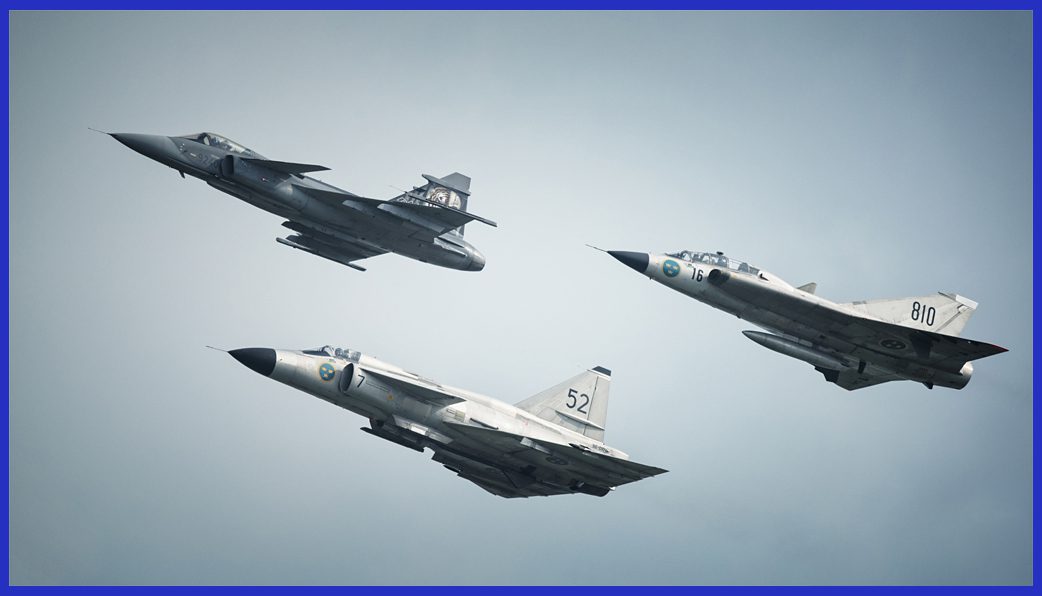
The Viggen was a true multi-role aircraft, capable of performing air-to-air combat, ground attack, reconnaissance, and electronic warfare missions. Its powerful Volvo RM8 turbofan engine enabled supersonic speeds, while its distinctive curved delta wings ensured stability and agility in various combat scenarios. Renowned Swedish pilot Major Michael Rosenquist, a Flygvanet pilot, stated, ‘The feeling of flying the aircraft can be expressed in one word: force. After flying the Viggen for 18 years, I am still impressed by it.’
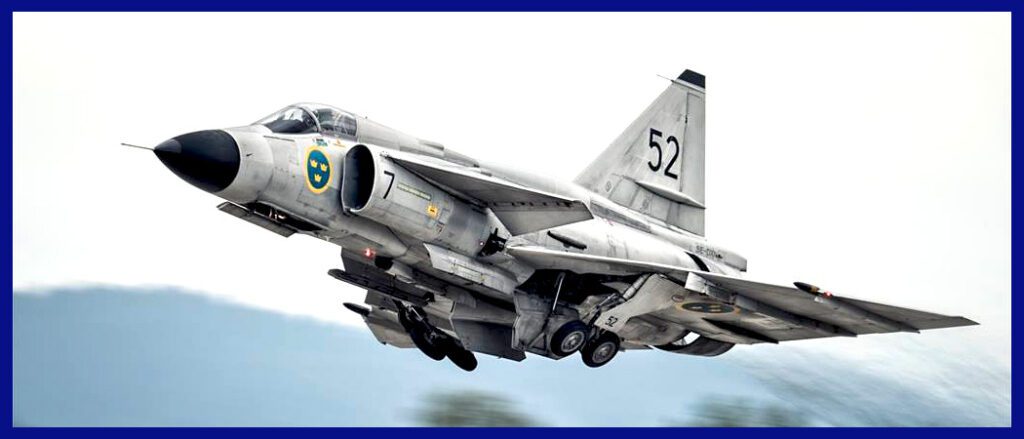
It is a retired Swedish single-engine, single-seat, multi-role combat aircraft with a short-to-medium range. The type’s development work was started at Saab in 1952, and after a radical delta wing layout was chosen, the plane made its first flight on 8 February 1967 and went into service on 21 June 1971. It was the first canard design to be mass-produced. The Viggen was, at the time of its introduction, considered the most sophisticated fighter plane in Europe.
One of the most impressive aspects of the Viggen was its ability to operate from austere and dispersed airfields, making it a critical component of Sweden’s defence strategy during the Cold War. Its adaptable design allowed it to carry an array of weapons, including missiles, bombs, and rockets, making it a versatile asset for Swedish defence.
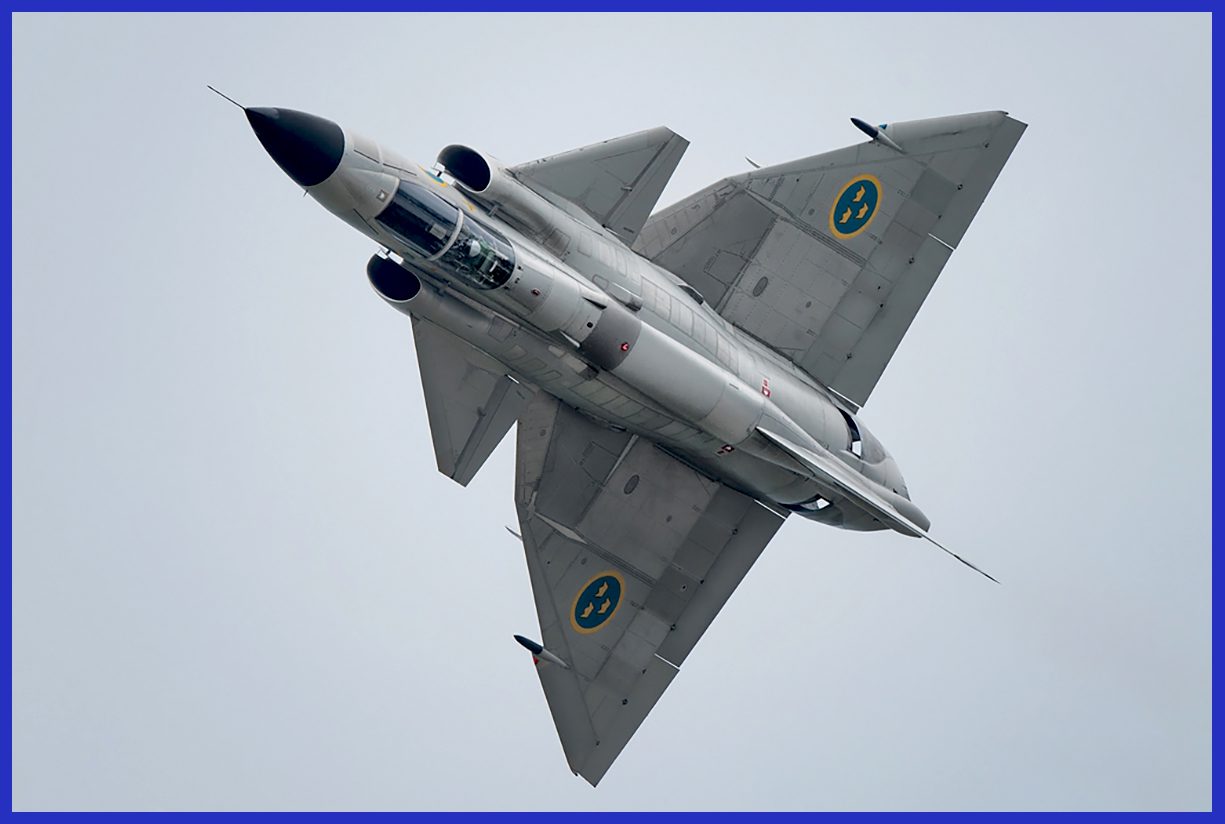
About the Design and Development of the Saab Viggen
The main drivers of the Saab 37 Viggen design were short-field performance and ease of maintenance. Convair and Dassault had proven that the delta wing offered great speed and combat performance but had the disadvantage of a high landing speed. Saab’s solution was to add a canard foreplane ahead of the wing, equipped with trailing-edge flaps. Canards had been used on various experimental aircraft and date back to the Wright Flyer, which had its pitch control surface at the front, but they had not appeared on a production jet fighter before.
The reason for the concentration on takeoff and landing performance was Sweden’s dispersed base system, which would see fixed air bases abandoned and combat aircraft dispersed to pre-prepared stretches of straight road supported by a few mechanics and mobile ground equipment.

Landing – And Turning – On A Dime: The thrust reverser, powerful brakes on the large double wheels, canard flaps, and airbrakes all contributed to the Viggen’s short landing distance, even in snowy conditions. A Viggen could land within 500 meters, stop, turn around within the runway width, and take off again at the same distance. The wheel arrangement was thinner than standard twin wheels, allowing them to fit inside a thin wing when retracted.
In order to fulfil the duties of a fighter bomber/strike fighter (AJ 37), aerial reconnaissance (SF 37), maritime patrol/anti-surface (SH 37), and a two-seat trainer (Sk 37), various separate variants of the Viggen were constructed. The all-weather interceptor/strike fighter JA 37 version was first introduced in the late 1970s.
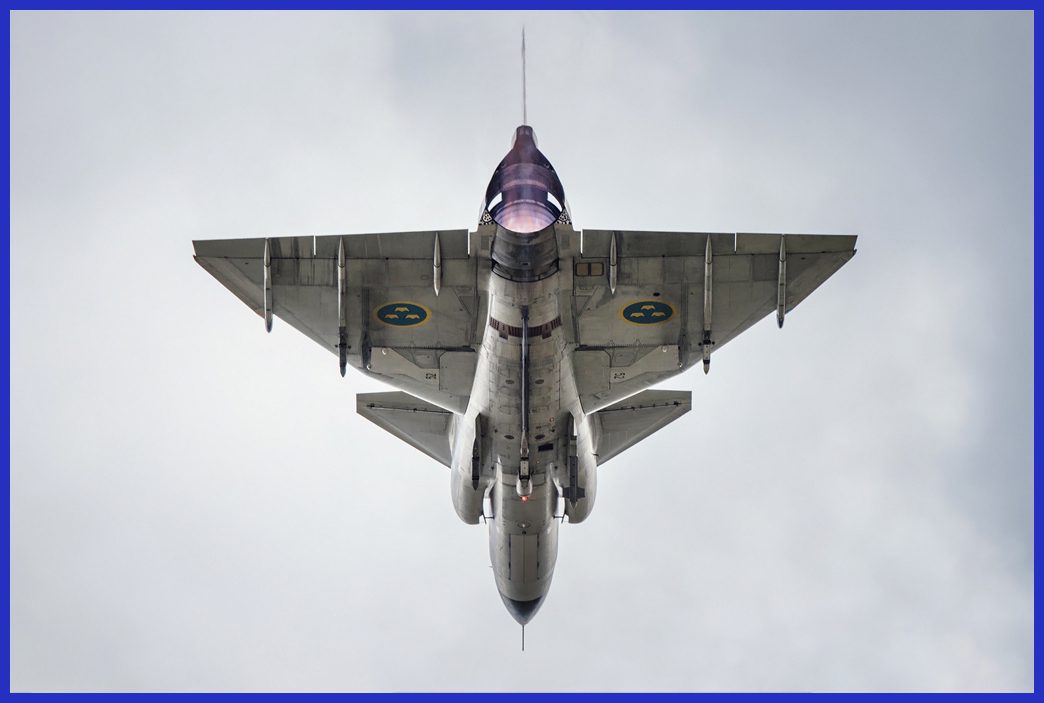
From the very beginning, the Viggen was designed as an integrated weapon system, intended to operate alongside the latest iteration of Sweden’s national electronic air defence system, STRIL-60. It served as the country’s primary platform, with the flexibility to effectively handle various tactical mission roles.
Additional criteria encompassed the need for supersonic capability at low altitudes, Mach 2 performance at higher altitudes, and the capacity for short landings at low angles of attack to minimize the risk of runway damage. The aircraft was also intentionally designed to facilitate straightforward maintenance and repair, ensuring accessibility for personnel with limited training.
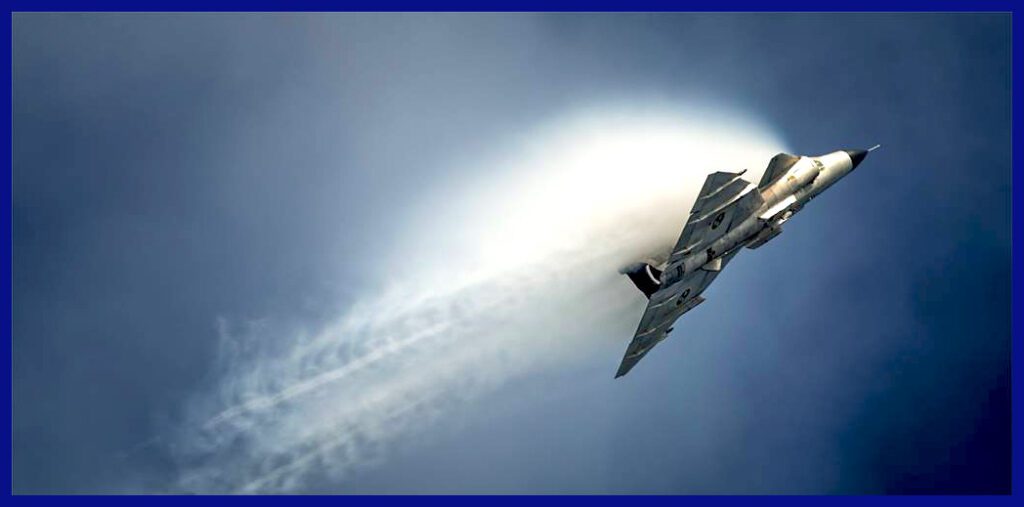
The Launch of the Saab Viggen Project
The development of Aircraft System 37, which would eventually become the Viggen, received authorisation from the Swedish government in December 1961. The aircraft itself, the engine, the ejector seat, the weaponry, the reconnaissance systems, the ground support equipment, and training tools like simulators were all finished by 1962.
In 1963, Saab finalized the aerodynamic design of the aircraft; the aerodynamic configuration was radical: it combined an aft-mounted double delta wing with a small, high-set canard foreplane, equipped with powered trailing flaps mounted ahead of and slightly above the main wing; this would be judged to be the best means to satisfy the conflicting demands for STOL performance, supersonic speed, low turbulence sensitivity at low-level flight, and efficient lift for subsonic flight.

Saab decided to use a single, sizable turbofan engine to power the type throughout its development. Hence, Saab decided to use the Volvo RM8, a licensed production of the US Pratt & Whitney JT8D engine. The RM8 underwent a significant upgrade that included the use of new materials to support flight at Mach-2 speeds, a Swedish afterburner, and a completely adjustable nozzle.
In 1967, the Swedish Government determined that the forthcoming AJ 37 Viggen offered the most favourable combination of cost-efficiency and ease of maintenance. By April 1968, the Swedish government officially granted authorization to commence Viggen production, placing an order for 175 aircraft in the same year.
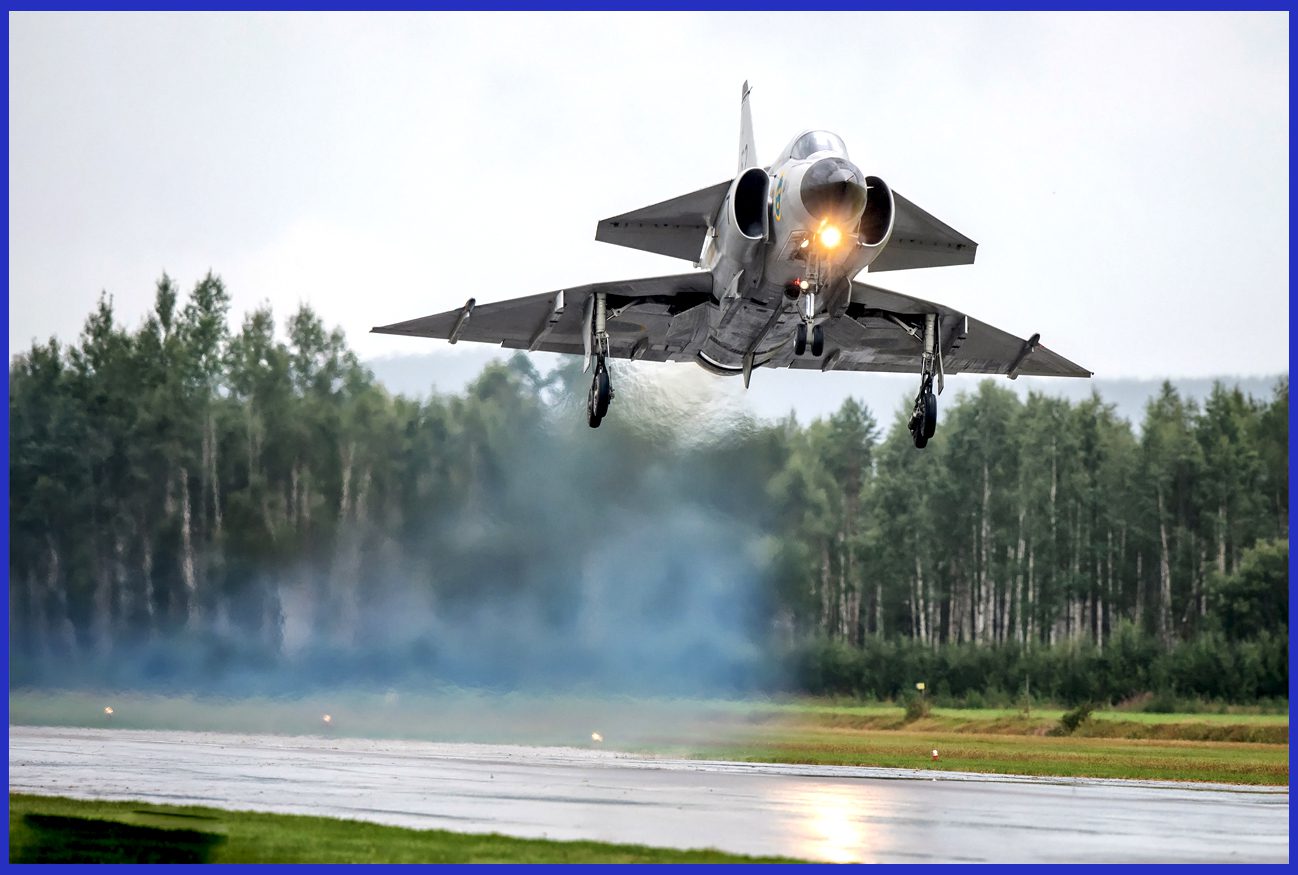
Also in 1968, Saab began work on the Viggen’s maritime reconnaissance and photo-reconnaissance variants. In May 1969, the Viggen made its first public appearance outside of Sweden at the Paris Air Show. On 23 February 1971, the first production aircraft, an AJ37 model, conducted its first flight. In July 1971, the first production aircraft was delivered to the Swedish Air Force.

India’s Interest in the Saab Viggen in the 1980s
In 1978, the United States prevented a significant potential sale to India, which would have included the sale of several Swedish-built Viggens and a licensed production agreement for the Viggen to be manufactured in India. This was done by withholding an export license for the RM8/JT8D engine and other American technologies used in the aircraft. India subsequently chose to acquire the SEPECAT Jaguar instead.
According to confidential United States diplomatic cables, it was reported that India’s interest in the Viggen was primarily attributed to Rajiv Gandhi’s influence and was claimed to have occurred without any consultation or input from the Indian Air Force. According to author Chris Smith, the Viggen had been the preferred choice for the Indian Air Force before the deal was obstructed by the United States.
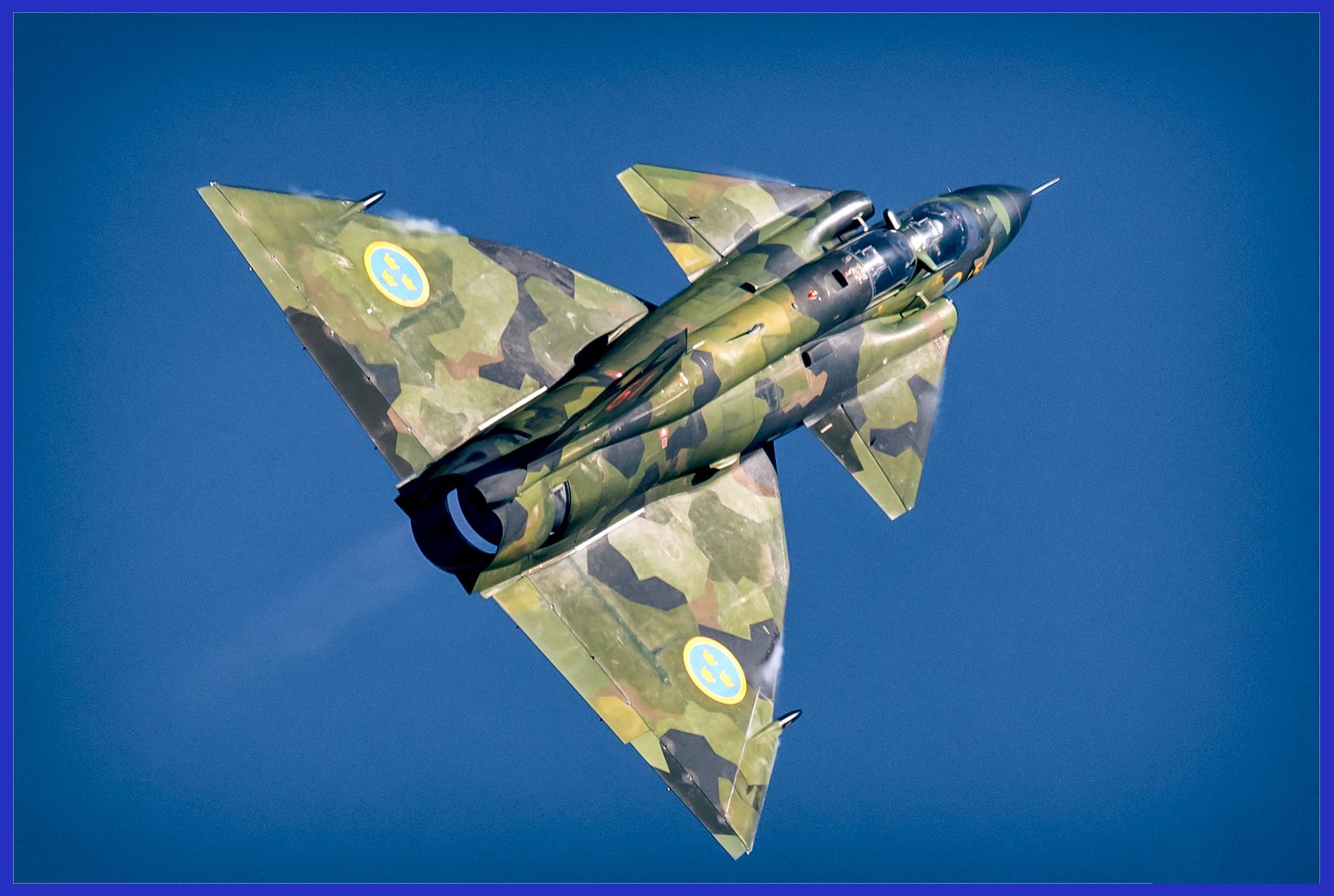
Retirement of the Saab Viggen
By 1994, the Viggen was gradually being phased out as more Saab JAS 39 Gripen aircraft were being supplied. The Swedish Air Force officially retired the last front-line Viggen on November 25, 2005. The final Viggen flights alongside the Gripen took place in June 2007. A few aircraft were kept in operational condition at F 17M in Linköping for electronic warfare training.

Specifications of the Saab Viggen JA 37
- Country of Origin: Sweden
- Crew: 1 ( in trainer version 2 )
- Length: 53ft 9 in ( 16.40 M )
- Height: 19 ft 4 in ( 5.90 m )
- Wingspan: 34 ft 9 in ( 10.60 m )
- Wing area: 495.16 sq ft ( 46 m2 )
- Empty Weight: 9,500 kg (20,944 lb)
- Gross weight: 16,439 kg (36,242 lb)
- Max takeoff weight: 19,274 kg (42,492 lb)
- Powerplant: 1 × Volvo RM8B turbofan, ( Pratt & Whitney JT8D-22 with Swedish design ) 72.1 kN ( 16,200 lb st ) thrust dry, 125 kN ( 28,000 lb st ) with afterburner
- Maximum Speed: 2,231 km/h ( 1,386 mph ) at 36,100 ft
- Mach: 2.1
- Ferry range: 1,820 km
- Combat range: 1,000 km ( 621 miles )
- Service ceiling: 60,000 ft ( 18,290 m )
- Rate of climb: 40,000 ft/min ( 203 m/s )
- Armament: Guns: 1 × 30 mm Oerlikon KCA cannon with 150 rounds
- Hardpoints: 9 ( three hardpoints under the fuselage and three under each wing ) with a capacity of 7,000 kg ( 15,000 lb ), With provisions to carry combinations of AMRAAM, Skyflesh, Sidewinder air-to-air missiles, rocket pods, and RB 04, RB 05, RBS 15 air-to-surface/anti-ship missiles.
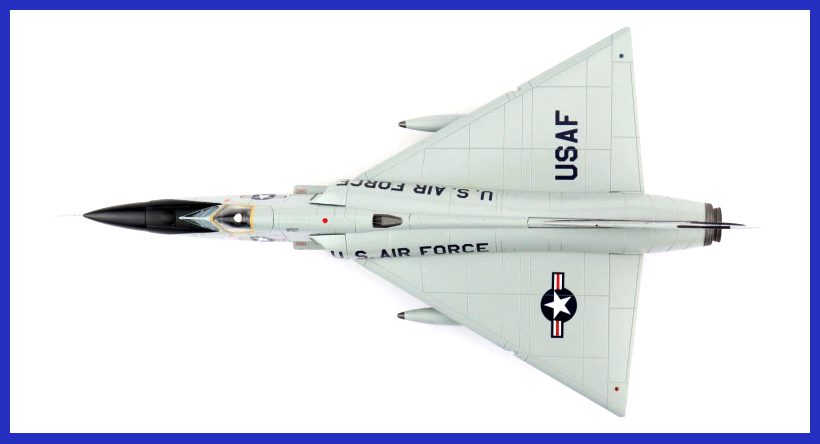
Moreover, don’t miss the golden opportunity to own an exquisite and awe-inspiring scale model of the Convair F-106A Delta Dart fighter jet, conveniently available exclusively on AirModels. These remarkable and iconic military fighter jets boast an impeccable track record and are now available for purchase with worldwide delivery. Click here now to secure your piece before the limited stock is depleted.

In conclusion, the Saab 37 Viggen stands as an extraordinary testament to Swedish engineering ingenuity and the pursuit of excellence in military aviation. Its distinctive design, versatility, and groundbreaking features allowed it to serve as a true workhorse for Sweden’s defence needs and solidify its reputation as one of the most iconic fighter aircraft of its era.
The Viggen’s legacy extends beyond its Cold War origins, as it has continued to inspire admiration among aviation enthusiasts and experts worldwide. Its enduring appeal lies in its ability to adapt to a multitude of roles, showcasing the adaptability and forward-thinking approach of the Swedish aerospace industry.
While the Viggen may no longer grace the skies in active military service, its impact on the history of aviation endures, reminding us of the remarkable achievements that emerge when innovation, engineering brilliance, and a commitment to national defence converge. The Saab 37 Viggen remains a symbol of Sweden’s dedication to excellence and a source of inspiration for future generations of aerospace engineers and enthusiasts alike.

Important Announcement for Our Valued Readers!
After an article is published, it is possible that updates or changes may have occurred beyond the time of publication. Therefore, it is important to be aware that certain information in the article might be outdated. To ensure the most accurate analysis, it is highly recommended to verify the content with the latest sources available.
However, we are dedicated to delivering outstanding articles on military products and global updates. Maintaining quality and smooth operation requires resources. Your support sustains our efforts in providing insightful content. By purchasing high-quality products through our affiliated links, you help us keep our platform alive and acquire top-notch items. Your unwavering support is invaluable and inspires us to strive further.
We welcome your suggestions and requests for more information, as we value feedback from our readers. If there’s specific defence material or equipment not covered on our site, please share your request in the comments. We’ll strive to research and provide the required information. We sincerely thank you for your unwavering interest in our website, and we eagerly anticipate hearing from you! Enjoy your reading experience!
